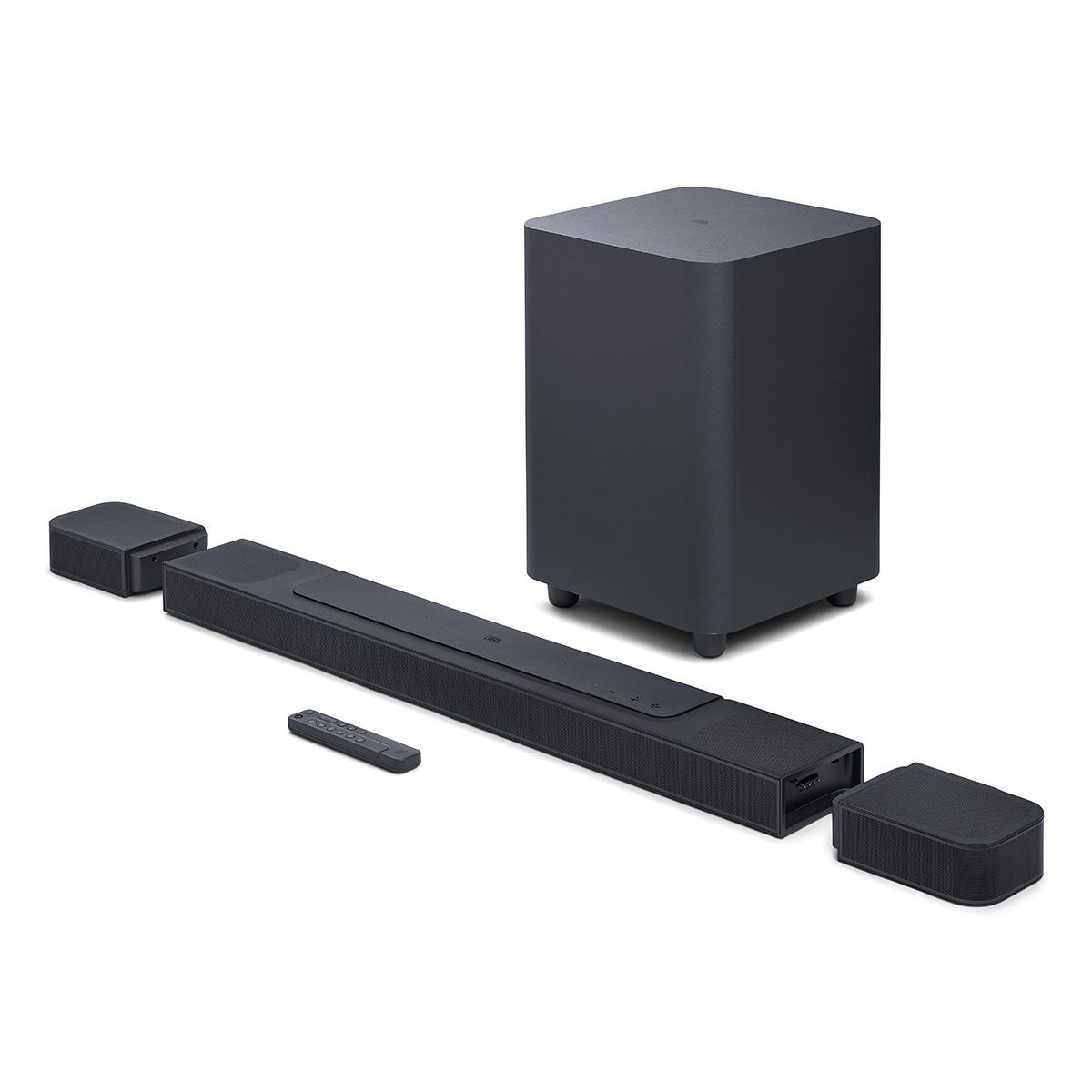
When it comes to creating an immersive home theater experience, today's high-end soundbars offer impressive capabilities that were once only possible with complex speaker arrays. Let's dive into a detailed comparison of two leading options: the JBL Bar 1000 ($1,139.95) and the Sonos Arc Ultra ($999).
Today's premium soundbars have evolved far beyond simple TV speaker upgrades. They now incorporate sophisticated technologies like Dolby Atmos (which creates a three-dimensional sound bubble around you) and upward-firing speakers (which bounce sound off your ceiling for height effects). These features aim to replicate the immersive experience you'd get in a movie theater.
Both systems launched relatively recently - the JBL Bar 1000 arrived in late 2022, while the Sonos Arc Ultra represents a significant upgrade to the original 2020 Arc. These newer models reflect important advances in sound processing and driver technology that make compact systems sound increasingly comparable to traditional multi-speaker setups.
The JBL Bar 1000 and Sonos Arc Ultra take notably different approaches to delivering theater-like sound. JBL opts for a more traditional home theater configuration, providing physical speakers for each sound channel. The system includes a main soundbar, two detachable wireless rear speakers, and a separate subwoofer for deep bass. This approach ensures true surround sound since audio actually comes from behind you.
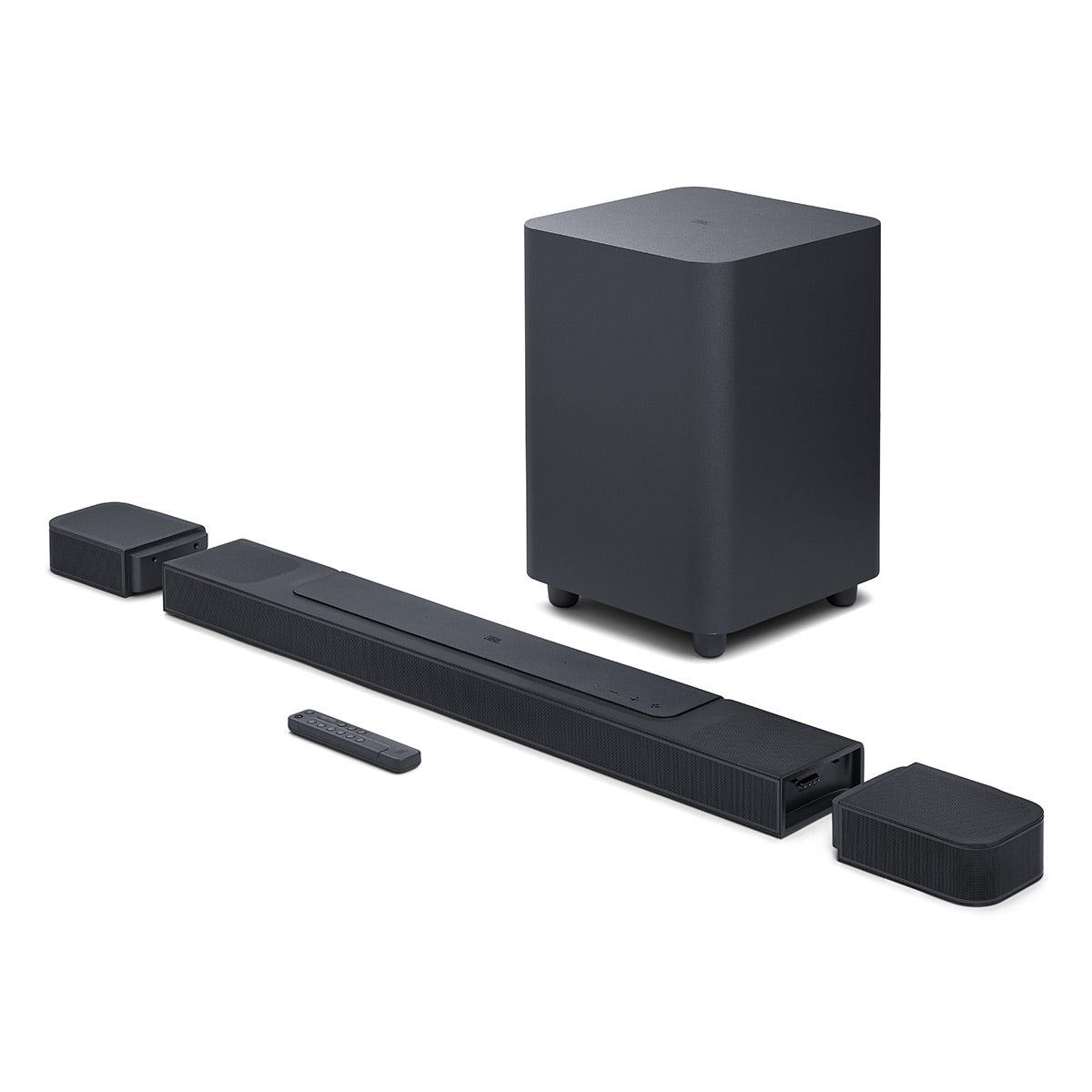
Sonos takes a more minimalist route with the Arc Ultra, packing everything into a single elegant bar. It uses advanced sound processing and carefully angled speakers to create virtual surround effects. While it can't quite match the immersion of physical rear speakers, this design offers easier setup and a cleaner look that many people prefer.
The JBL system delivers impressive performance out of the box. Its 7.1.4 channel configuration (7 surround channels, 1 subwoofer, 4 height channels) provides genuine surround sound. The detachable rear speakers are particularly clever - they charge when connected to the main bar and can be placed anywhere when in use.
The included 10-inch wireless subwoofer is a standout feature, providing deep, impactful bass that you can feel during movie explosions or music. Four up-firing speakers (two in the main bar, two in the rear units) create convincing overhead effects for Dolby Atmos content.
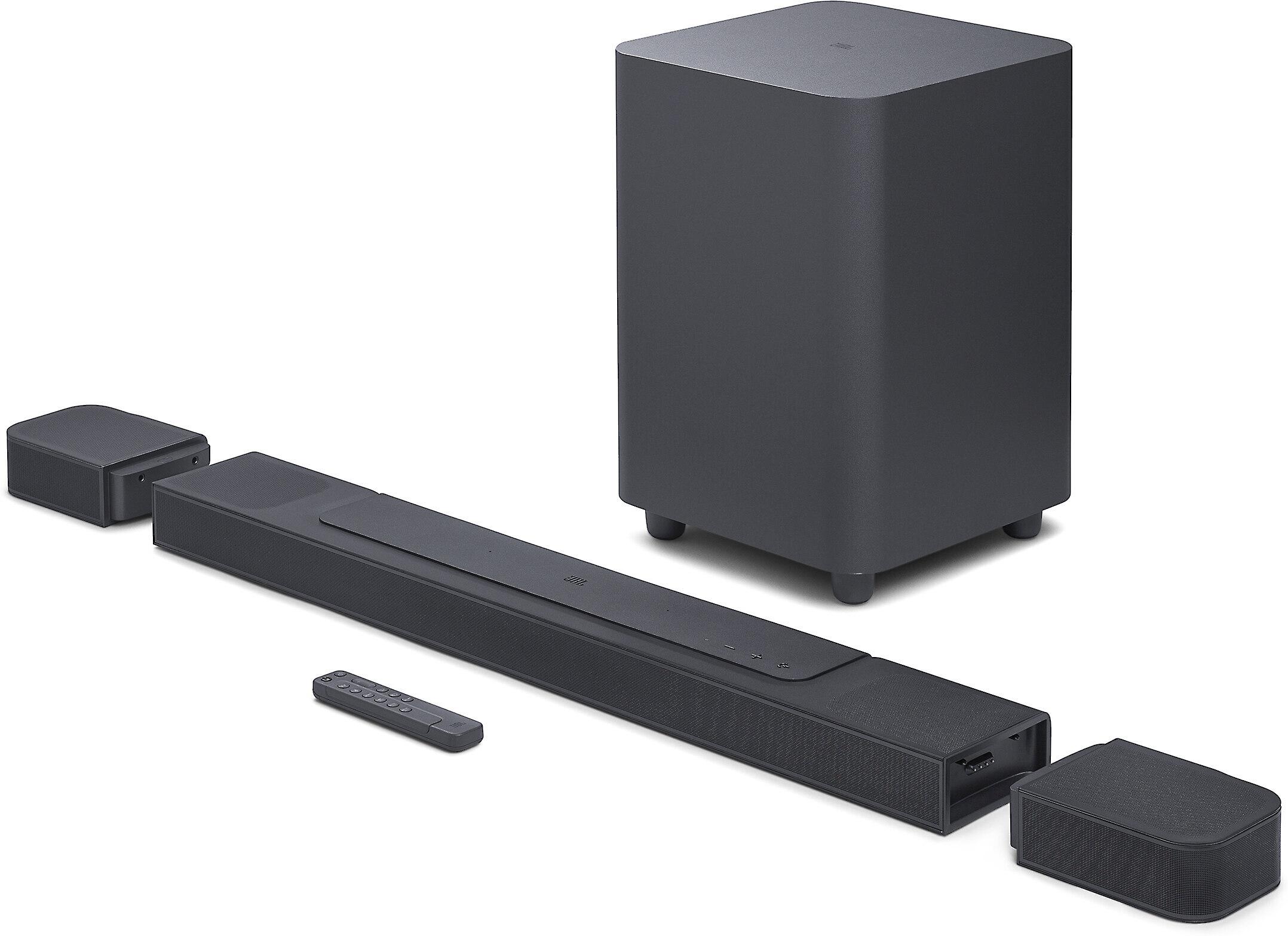
Despite its all-in-one design, the Arc Ultra produces surprisingly immersive sound. Its 9.1.4 channel virtual configuration uses sophisticated processing to simulate surround effects. The new Sound Motion technology delivers improved bass compared to the original Arc, though it can't match the impact of JBL's dedicated subwoofer.
The Arc Ultra particularly excels at dialogue clarity and music playback. Its room calibration feature (called Trueplay) optimizes the sound for your specific space, though this currently only works with iOS devices.
The JBL Bar 1000 requires more initial setup due to its multiple components. You'll need to find spots for the rear speakers and subwoofer, though the wireless design eliminates cable-routing headaches. The system includes HDMI inputs for connecting multiple devices and supports 4K video passthrough.
The Sonos Arc Ultra offers nearly plug-and-play simplicity - just connect it to your TV's HDMI ARC port and you're mostly done. However, its real strength lies in expandability. You can add Sonos speakers for true surround sound later, integrate it into a whole-home audio system, or add a Sonos Sub for enhanced bass.
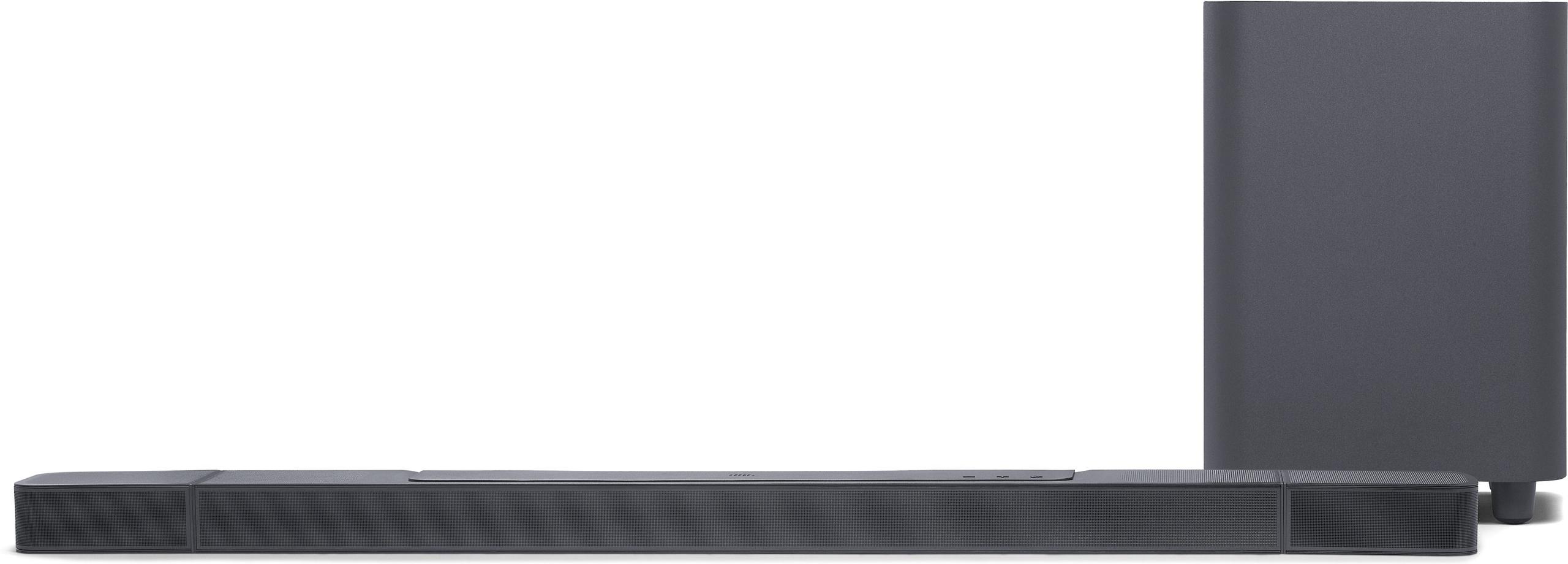
Both systems support modern streaming features, but Sonos has a clear edge in whole-home audio. The Arc Ultra works seamlessly with other Sonos speakers, supports virtually every streaming service, and offers excellent voice control options through Alexa or Google Assistant.
The JBL system isn't lacking in smart features though. It includes built-in Chromecast, AirPlay 2 support, and Bluetooth connectivity. Its companion app allows detailed audio adjustments and easy source switching.
When comparing value, consider your priorities:
The JBL Bar 1000's $1,139.95 price includes everything needed for a complete surround sound system. For pure home theater use, it offers excellent value since similar performance from separate components would likely cost more.
The Sonos Arc Ultra's $999 price might seem more attractive initially, but achieving comparable surround sound requires purchasing additional speakers and a subwoofer, potentially pushing the total cost above $2,000. However, this modular approach allows you to spread out the investment over time.
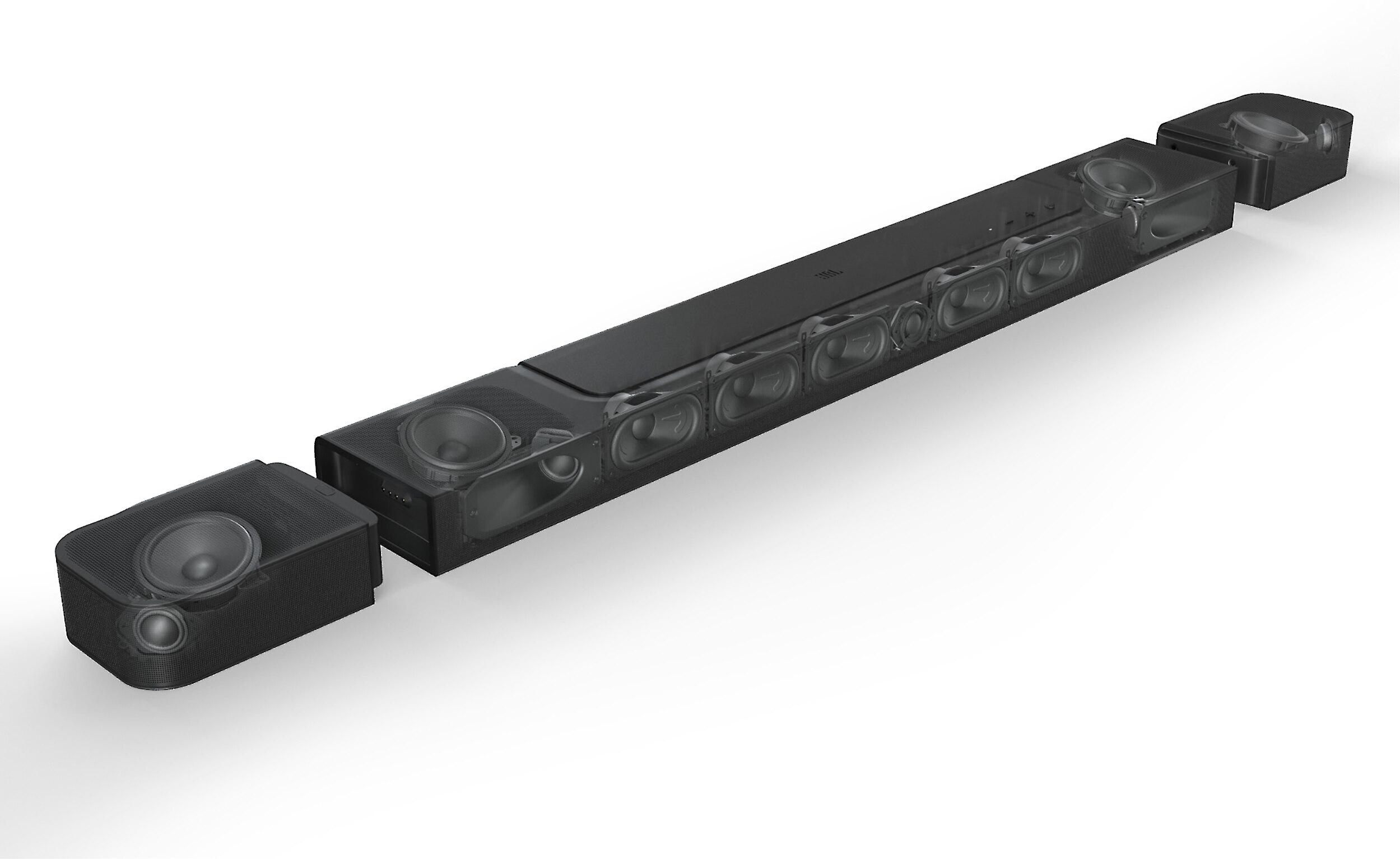
Choose the JBL Bar 1000 if:
Choose the Sonos Arc Ultra if:
Having spent time with both systems, I've found the JBL setup more engaging for pure home theater use. The physical rear speakers and powerful subwoofer create a more convincing sense of immersion during movies and games. However, the Sonos Arc Ultra's elegant simplicity and superior music performance make it a better choice for mixed-use spaces where movies aren't always the priority.
Both systems represent significant advances over their predecessors, particularly in processing capability and driver technology. They demonstrate how far soundbar technology has come in creating convincing surround sound from relatively compact packages.
Remember that room acoustics play a huge role in any audio system's performance. Both products include room correction features to optimize their sound for your space, but they'll perform best in rooms with reasonable acoustics and appropriate TV placement.
| JBL Bar 1000 - $1,139.95 | Sonos Arc Ultra - $999 |
|---|---|
| Channel Configuration - Determines how precisely sound can be placed around you | |
| 7.1.4 with physical speakers | 9.1.4 virtual channels |
| Subwoofer - Critical for impactful bass in movies and music | |
| Included 10" wireless subwoofer | No subwoofer (optional purchase) |
| Surround Speakers - Key for true immersive experience | |
| Included detachable wireless speakers | None (optional separate purchase) |
| Total System Power - Impacts maximum volume and dynamics | |
| 880W total system power | Not specified by manufacturer |
| Room Calibration - Optimizes sound for your space | |
| Basic room calibration | Advanced Trueplay (iOS only) |
| Ecosystem Integration - Important for whole-home audio | |
| Basic streaming, Chromecast, AirPlay 2 | Full Sonos ecosystem, superior multi-room |
| Physical Size - Consider your TV and space | |
| 47.6" x 2.4" x 4.7" (main bar) + additional components | 45" x 3.4" x 4.5" (single unit) |
| Setup Complexity - Affects initial experience | |
| More complex with multiple components | Simple single-unit setup |
| Additional Cost for Full System - Total investment needed | |
| Complete system included | +$1,500 for Sub + surrounds |
For movies, the JBL Bar 1000 has an advantage due to its included rear speakers and dedicated subwoofer. This creates a more immersive experience with true surround sound, making it the better choice for dedicated home theater use compared to the Sonos Arc Ultra.
The JBL Bar 1000 at $1,139.95 offers better initial value since it includes everything needed for a complete surround system. The Sonos Arc Ultra costs $999 but requires additional purchases for comparable functionality.
While not absolutely necessary, physical rear speakers like those included with the JBL Bar 1000 provide a more authentic surround experience. The Sonos Arc Ultra creates virtual surround effects, which can be good but won't match the immersion of physical speakers.
The Sonos Arc Ultra offers simpler setup with its single-unit design. The JBL Bar 1000 requires more setup time due to placing multiple components, though wireless connectivity makes this manageable.
Yes, both systems support Dolby Atmos. The JBL Bar 1000 uses four up-firing speakers (two in main bar, two in rear speakers), while the Sonos Arc Ultra uses upward-firing drivers in the main unit.
The JBL Bar 1000 is generally better for gaming due to its dedicated rear speakers providing more precise directional audio cues and its powerful subwoofer for explosive effects.
The Sonos Arc Ultra has an edge in music playback with superior stereo separation and more balanced sound. However, the JBL's subwoofer provides deeper bass for certain music genres.
The JBL Bar 1000's higher power output (880W) and physical speaker separation make it more suitable for larger rooms. The Sonos Arc Ultra may struggle to fill very large spaces without additional speakers.
The Sonos Arc Ultra offers more expansion options within its ecosystem. The JBL Bar 1000 comes complete but has limited expansion possibilities.
Both systems offer good dialogue clarity, but the Sonos Arc Ultra has more advanced voice enhancement technology with multiple adjustment levels.
Both soundbars work best with TVs that have HDMI eARC ports for full Dolby Atmos support. They'll work with most modern TVs, but older models may have limited functionality.
The Sonos Arc Ultra is better suited for apartment living due to its single-unit design and adjustable bass levels. The JBL Bar 1000's powerful subwoofer might be too intense for shared walls.
We've done our best to create useful and informative comparisons to help you decide what product to buy. Our research uses advanced automated methods to create this comparison and perfection is not possible - please contact us for corrections or questions. These are the sites we've researched in the creation of this article: zdnet.com - jbl.com - jbl.com - pcrichard.com - rtings.com - d21buns5ku92am.cloudfront.net - ro.harmanaudio.com - target.com - harmanaudio.com - dell.com - mm.jbl.com - dolby.com - jbl.com.my - videoandaudiocenter.com - bestbuy.com - shopjetson.com - youtube.com - ign.com - crutchfield.com - dowtechnologies.com - sonos.com - appleinsider.com - pcrichard.com - clefdesol.com - sonos.com - businessinsider.com - audioadvice.com - en.community.sonos.com